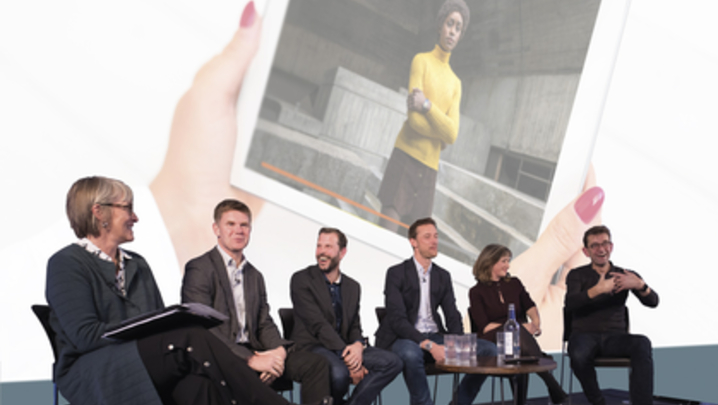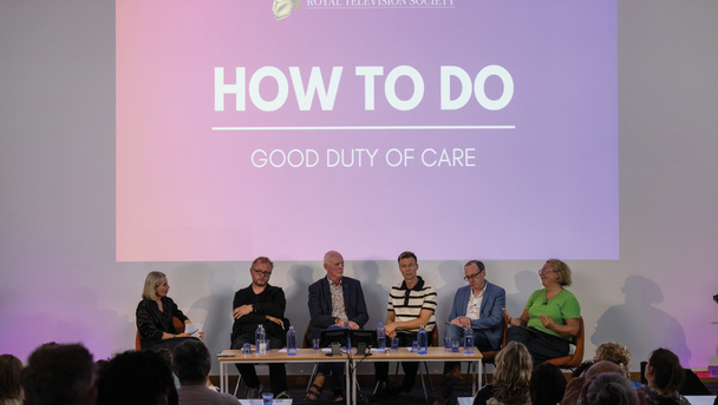Torin Douglas questions whether TV audience figures reflect contemporary viewing habits
Ever since TV technology made it possible to measure overnight ratings, there have been some in the industry who wish it hadn’t. Programme controllers and advertisers have been accused of not giving new dramas or comedies or entertainment formats enough time to establish themselves. Journalists are blamed for rushing to judgement with headline-grabbing claims that can damage a programme’s prospects.
And, as viewing habits change, overnight figures are giving a less accurate picture of a programme’s total audience – including hit shows such as Game of Thrones and Love Island.
Is it time we found a new way of reporting TV audiences?
Sky UK’s director of programmes, Zai Bennett, recently issued a clarion call for the industry to change the way it reports and focuses on viewing figures.
In a blog, he claimed that broadcasters were failing to count millions of viewers and should better reflect the way people are now watching TV – with more viewing online, on mobiles and on-demand, more “binge” and catch-up viewing, and some programme episodes released online before they’re broadcast or as box sets.
Bennett warned that, by not reporting all viewing figures, TV broadcasters were “underselling themselves” – in marked contrast to online players such as Netflix and Amazon Prime.
Barb, the joint industry TV research body, is on the case – but is it moving quickly enough?
For years, its “gold standard” time-frame for the Top 30 TV audience charts has been the seven-day “consolidated” viewing figure, not the overnight rating.
Barb also records any viewing on a TV set up to 28 days after the first broadcast and, via its Project Dovetail, online viewing through TV players.
"We’re going to completely change the way that we measure and report on the performance of our programmes"
But how many people in the industry, apart from researchers, ever bother to look at these? Many may think that Bennett has a point.
“The way the industry talks about TV viewing isn’t reflective of the ways people are watching today,” Bennett wrote. “We’re supportive of Barb and its work with Project Dovetail to improve the way that TV viewing is captured, but there are gaps in the audience numbers that the industry uses.
“Any new TV series that we release as a box set on-demand, alongside a traditional week-by-week transmission, such as Tin Star, Riviera or Fortitude 2, can have more than 60% of its audience completely missed in official figures,” he claimed. “So, at Sky, we’re going to completely change the way that we measure and report on the performance of our programmes – and we won’t talk about overnights at all.”
He said that, at the end of a series such as Tin Star, Sky would report on its “total programme consumption” – by “using Barb’s seven-day cumulative audience figures alongside our own internal data that Barb isn’t able to capture, such as any on-demand viewing of a show before it has had a linear transmission.”
That pronouncement has caused a stir at Barb and among other broadcasters. ITV’s managing director for commercial, Kelly Williams, says: “I sympathise massively with Zai as a programme-maker and commissioner, but we must be careful not to compare apples and oranges, and not mix different metrics, particularly for advertisers.
“We must not fall into the trap that the online industry falls into almost daily, in claiming stuff that isn’t necessarily true. At a time when Procter & Gamble and other advertisers have become highly critical of the digital companies’ claims, we’ve got to maintain the rigour around TV audience measurement.”
Barb CEO Justin Sampson says that it can already do what Sky is asking for and is discussing this with them. “For two years, we’ve been publishing our weekly TV Player Report, which shows the viewing to on-demand and live-streamed content via mobile and online TV apps,” he explains. “Now, through techniques such as audio-matching, we can also measure programmes that can be viewed before they are broadcast – but we do need the co-operation of the broadcasters (and, increasingly, the rights holders) to do so.”
Sampson says Top of the Lake on BBC Two provides a good example: “Before the new series was broadcast, viewers could watch it on-demand on a TV set, a tablet, a PC or a smartphone – 643,000 people watched episode 3 before it was broadcast; 768,000 viewers watched it live or on the same day as broadcast on a TV, tablet, PC or smartphone. Over the next seven days, 799,000 people watched it on timeshift or on-demand, and a further 582,000 viewers saw it in the three weeks after that.”
That gave a total of 2,792,000 viewers – compared with the “overnight” figure of 768,000 – all measured by Barb.
Sampson adds: “Sky is now actively planning to measure programmes such as Tin Star on Barb, using the same approach that the BBC has with Top of the Lake. The next stage of Project Dovetail, which is due to launch in March 2018, will bring more precision to this kind of analysis.”
Barb’s data is already used by the BBC to help it understand how viewing habits are changing. Head of audiences Sue Gray says: “Overnights are still useful for many genres, as they capture the 92% of BBC viewing that is either live or on the same day as live. But we are highly aware of the overnights’ limitations when considering young audience behaviour and genres such as drama, comedy and children’s.”
Last year, 98% of viewing of BBC news and weather was live, while it was 94% for sport and only 74% for comedy and 66% for the soaps. For drama series, the live audience was just 61% of the total. For instance, Sherlock’s audience grew by 59% in the seven days after its 8 January broadcast and by 15% in the following three weeks, giving it a total of 10,968,000 viewers.
BBC analysis shows that younger viewers – the 16-34s – are more likely to come to a series later in its run. Therefore, relying on overnight ratings can understate a show’s appeal to the young. For example, only 6% of the audience who watched Apple Tree Yard on the day of broadcast were aged 16-34, but they formed 15% of viewers between eight and 28 days later.
The success of ITV2’s summer breakout hit, Love Island, was also understated by traditional viewing figures. Its average TV audience was 2.5 million – with 1.9 million watching on the day of broadcast and 650,000 on seven-day catch-up.
But it also had no fewer than 1 million live streams and 1.8 million catch-up streams on the ITV Hub. Analysis by Thinkbox, the TV marketing body, suggests that many young people watched it live on their mobiles because “those still living with mum and dad could avoid having to squirm through the awkward sex chat – they could still enjoy the sex chat but separately”.
Unfortunately for ITV, those extra live viewers didn’t emerge publicly until Barb published its TV Player Report, which showed a huge increase in viewing to the ITV Hub.
ITV’s Williams says: “We knew how well it was doing but it wasn’t public at that stage. But now that we know how well it did, we can shout about it for next year.”
And that’s the problem with taking a longer view of audiences. By the time the 28-day Barb figure – or Sky’s “total programme consumption” figure – is published, the caravan has moved on, the ad breaks are over and the media (not to mention social media) are talking about different, newer shows.
Many will support Bennett’s contention that the industry should put a greater focus on the totality of the TV audience, but it is hard to know where, how and – perhaps most importantly – when this should be done.





